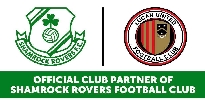- HOME
- HISTORY
- LOCATION
- CONTACTS
- CLUB NEWS
- CONTACT US
- OPERATIONAL PROCEDURES
- CONSTITUTION 2024
- ALL-WEATHER FACILITIES 2024
- INSURANCE
- CAR PARKING AT LUCAN UNITED FC 2024
- ZERO TOLERANCE TO RACISM AND DISCRIMINATION
- PITCH SIZES
- LUCAN UNITED PROMOTES EQUALITY, DIVERSITY AND INCLUSION
- VOLUNTEER RECRUITMENT POLICY
- CHILD SAFEGUARDING STATEMENT
- VOLUNTEER RECRUITMENT FORM
- SOCIAL MEDIA POLICY
- TRAVELLING GUIDELINES & TRIPS
- CODE OF CONDUCT FOR SPECTATORS
- AIRLIE PARK ASTRO
- SUSTAINABILITY/ RENEWABLE TECHNOLOGY PLAN
- MARKETING, SPONSORSHIP & COMMUNICATIONS SUBCOMMITTEE
- DATA PROTECTION AND PRIVACY POLICY
- PLAYERS CODE OF CONDUCT
- CODE OF CONDUCT FOR PARENTS
- CODE OF CONDUCT FOR COACHES
- DISCIPLINARY PROCEDURE
- FUNDRAISING & SPONSORSHIP POLICY AND GUIDELINES
- LUCAN UNITED FOOTBALL CLUB COMPLAINTS PROCEDURE
- POLICIES & PROCEDURES
What Can Youth Coaches Learn From Brendan Rodgers?
We examine how the unique, modern style of Brendan Rodgers is the perfect example for coaches at youth level. How are the Northern Irishman's skills so transferable?
By Omar Saleem | 31 March 2014
He’s one of management’s brightest young stars and his skills are some of the most transferrable in football. Brendan Rodgers, Liverpool’s likeable Northern Irish manager, is taking the Premier League by storm with his adventurous, modern, technical style at a monument of a club that had stagnated amid poor boardroom decisions and a lack of on-field quality.
For me, the most brilliant aspect of Rodgers’ style is how useful his skills are for all levels of the game. He’s a unique example of how man-management, productive coaching sessions and a likeable persona are vital traits in football.
It says a great deal that Steven Gerrard, one of the best players of his generation and a man who has worked under Rafa Benitez, Fabio Capello and Gerard Houllier among others, suggests that Rodgers is his finest man-manager. It gives a telling insight into how he has galvanized the changing room and how the players, led by Gerrard, have brought into what he expects.
It’s this ability, among other traits, to bring people on side that makes him such a talented coach. And it’s this very skill that so many youth coaches are missing from their own repertoire.
Consider for a moment that the players you coach are your staff in a new enterprise you’ve just set up. They indeed require a level of happiness to perform in their job, just like most of us do as adults. Then consider that your staff are also inexperienced and you have no way of replacing them. What do you do? Do you work hard to establish a way you can replace the whole team or do you expend that effort, and money, into training them to be what you want?
To me, a youth football team is much the same. As a coach it’s possible to go one of two ways. You can either depend heavily on sourcing the best players or you can accept what you have and train your team to reach their potential through a number of ways. It’s this exact conundrum that Rodgers faced upon walking through the doors at Melwood.
Take Jordan Henderson for example. He’s earning rave reviews for his outstanding performances this season having been discarded by many observers, some Liverpool fans included, during his first season under Kenny Dalglish. Rodgers’ method was simple; develop the player to fit into the set system and build his confidence. The same applies to the new role that Joe Allen is enjoying at Anfield. He’s a more dynamic, confident midfielder than ever and this owes everything to the manager.
It’s the same puzzle that many youth coaches are faced with; where to play certain players and how they will fit in. Rodgers’ solution is ideal – work your players into a system you believe in. His system is quick pressing, high tempo football and constant movement off the ball. The players perform within the tactics as a result of specialized coaching.
Youth coaches take note: if you want to get the best out of your players it depends more on what you do on the training field than where you select them to play on game day. It’s a shame that many coaches still select their biggest kicker to play in defence or goal, and their quickest player to run in behind the opposition to score. It’s this result-oriented approach that stunts development.
Brendan Rodgers didn’t walk into Liverpool and play Jordan Henderson at right back just because he covers more ground than most. Similarly he didn’t discard Jon Flanagan because of his raw technique. Instead he focused on refining their skills so they can perform in the role he wants them to. The lesson is clear; train your players to perform over the long term, not just because they currently have the biggest kick or the quickest feet. Players, especially at a young age, are constantly evolving and the path of their evolution is largely dependent on their mentor.
Productive coaching is vital and the Liverpool boss is clearly a master on the training field. The team couldn’t possibly press so effectively and in such an organized manner without coaching. They couldn’t possibly move off the ball so well without direction.
If you get a chance, source some videos of Rodgers coaching at Liverpool, Swansea or Chelsea. One thing always stands out; the players are constantly involved. There’s no standing around and there’s little time to detach their minds from the session. This intensity and constant involvement ensures that the players take the maximum touches (read 10,000 Touches by Jon Townsend) they can per day and they are immersed into training.
How many times have you seen kids idly standing around at training? Moreover, how many times have you seen kids standing around and looking at the session next door where the players are clearly enjoying their football, learning and are challenged? It pains me as a coach when I see that from afar and it’s the fundamental motivation behind this article.
Constant involvement at training is vital. Rodgers sets up very few drills without a ball. Even pre-season work is done with a ball as sharpness in possession precedes everything else. This is doubly important at youth level where players find it harder to retain information and the skills they’ve learnt from the season before. Don’t be the excuse maker as to why your players are standing around; be the one who involves the entire squad and ensures that players get the maximum possible touches.
There are plenty of drills on the internet at tFt and other great resources like Inside Soccer that make use of only a few balls at a training session. It’s a common excuse that a coach doesn’t have enough balls but flimsy. Be creative and be honest with your players. Give them the best possible chance to take the maximum number of touches at training. Only then will they improve technically and become the player you want them to be. Only then can you have a rounded squad of capable players. And only then have you served your purpose as a coach.
Following the example of someone like Rodgers is also important. To witness a leading coach demonstrate such a vast array of transferable skills is both unique and refreshing. Perhaps it’s his background in youth coaching that is coming through at the senior level. Perhaps it’s just that modern coaching at youth level is closing the gap to the professional game. Either way, it would be a foolish to discard such a brilliant example.
Tactics are indeed important and as players get older they become a leading facet of the game, but training and man-management will always trump the need for tactics with the younger generation. Good players are invariably smart players, and happy players are motivated players.
If you’re a youth coach, take some time to reflect on how you coach your players. Do they take the maximum number of possible touches at training? Do they enjoy the session? Are they improving in line with a long-term goal? Are they being challenged and motivated each time they train? These are crucial questions that each coach must ask of themselves to make their training as productive as possible for the players.
I assure you, it’s these sorts of questions that Rodgers and his staff will be asking themselves every day.
By Omar Saleem


- HOME
- |
- LOCATION
- |
- CONTACTS
- |
- CLUB NEWS
- |
- CONTACT US



